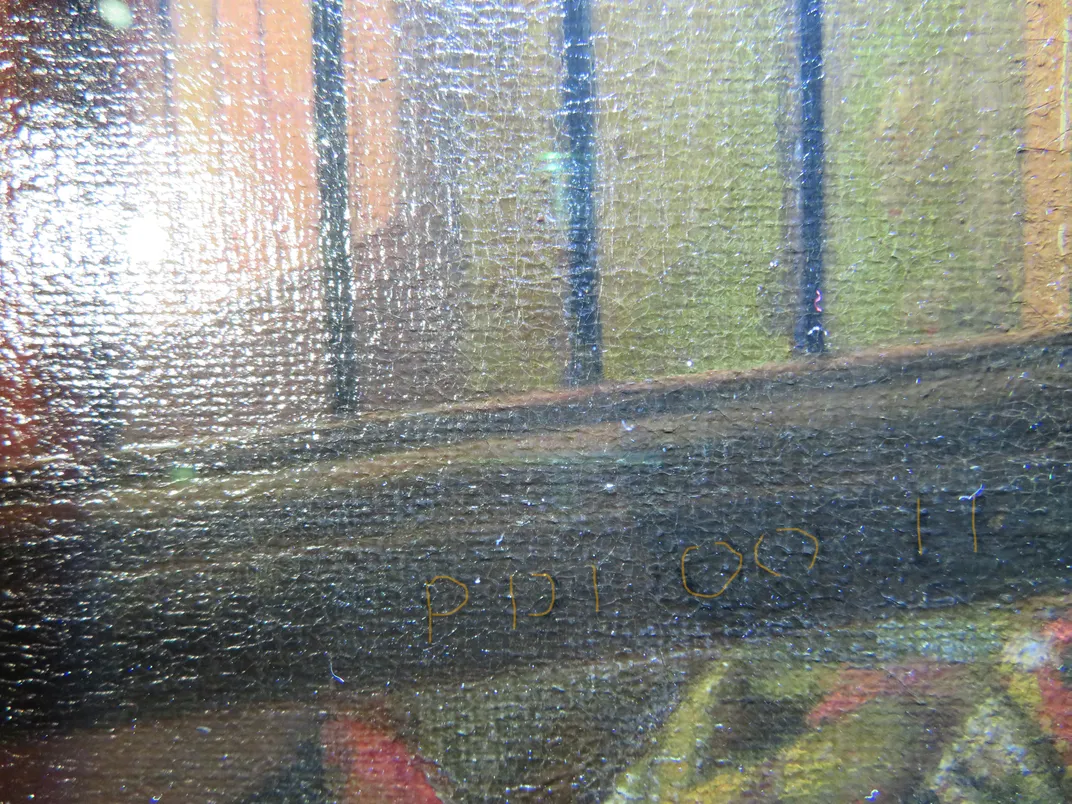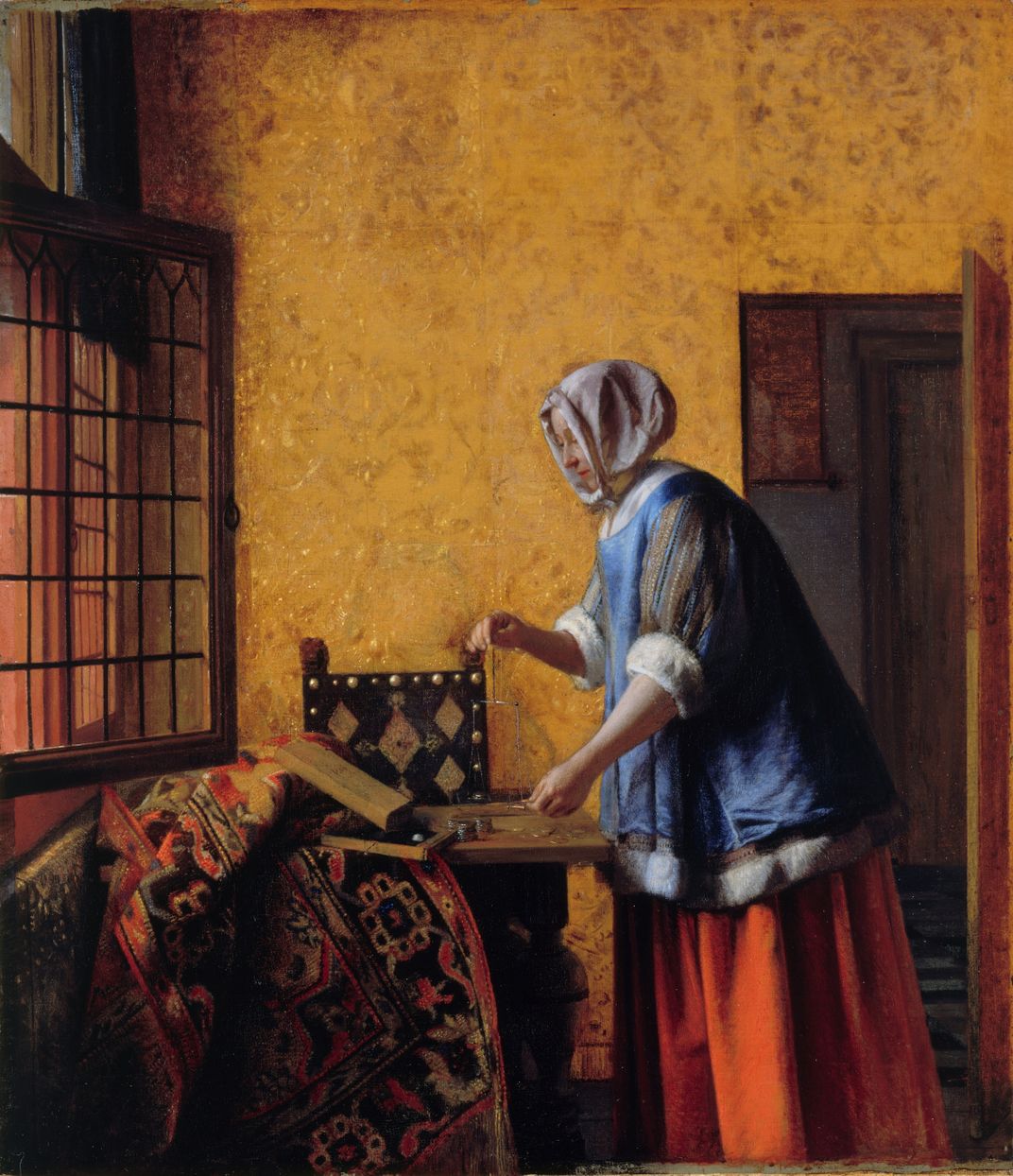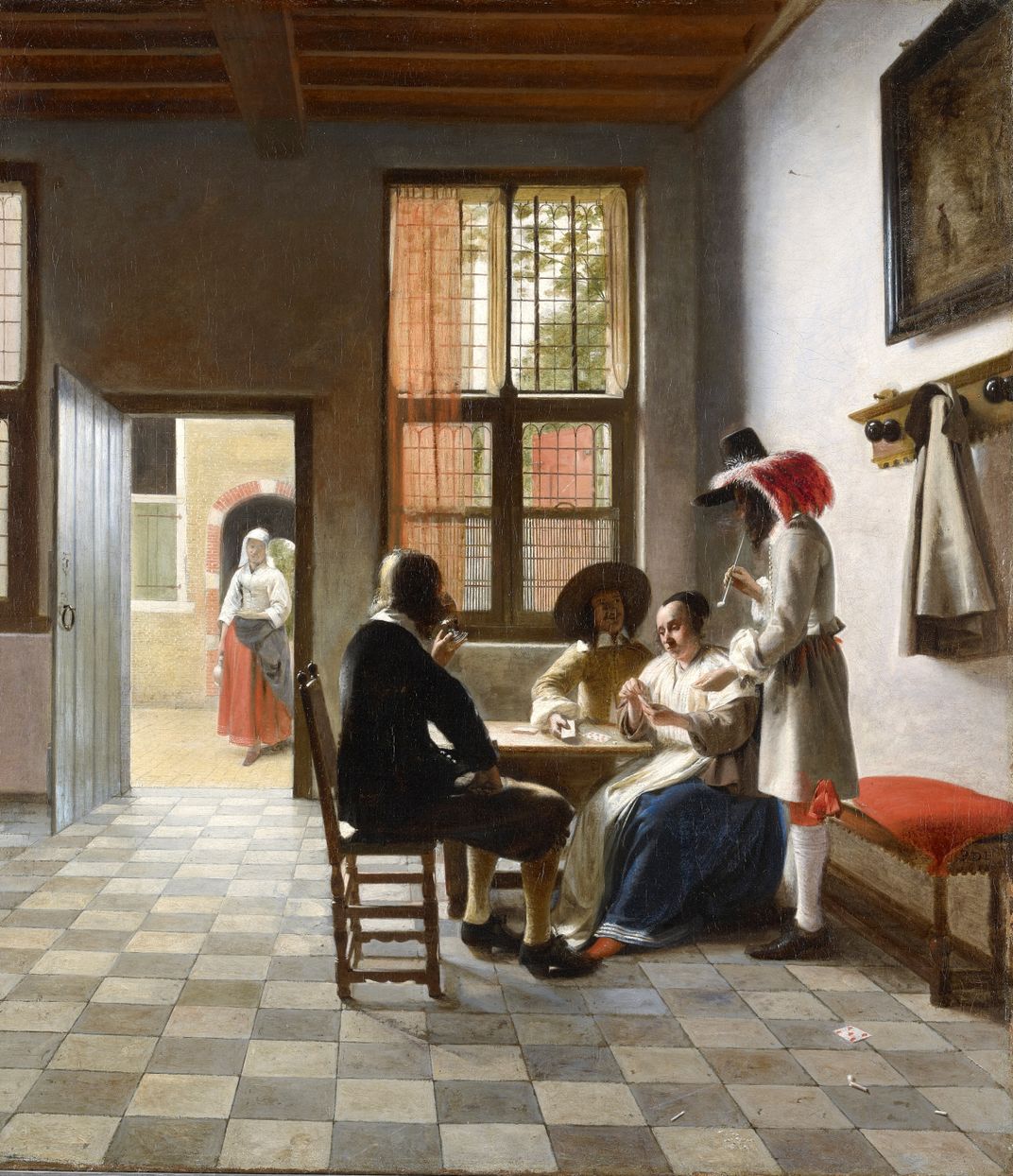New Exhibition Leads to Discovery of Dutch Painter’s Signature and Fingerprint
In advance of a retrospective at Museum Prinsenhof Delft, experts took a closer look at three works by Pieter de Hooch
/https://tf-cmsv2-smithsonianmag-media.s3.amazonaws.com/filer/d7/d3/d7d36549-8a33-45cf-be71-de1ba43566c9/pieter_de_hooch_cardplayers_in_a_sunlit_room_1658_detail_with_fingerprint_2.jpg)
A sweeping retrospective at the Museum Prinsenhof Delft in the Netherlands has united 29 works by Pieter de Hooch, the Dutch Old Master renowned for his depictions of 17th-century domestic life. The exhibition prompted institutions preparing to send their de Hooch paintings abroad to take a closer look at some of the artist’s pieces. And as Caroline Elbaor of artnet News reports, these assessments yielded new discoveries in three distinct paintings: a previously overlooked signature, a thumbprint, and the outlines of ships’ masts long hidden beneath a view of a courtyard.
The new exhibition, “Pieter de Hooch in Delft,” explores de Hooch’s connections to the Dutch city, where the artist lived during the mid-17th century. He belonged to the Delft painter’s guild and created some of his most admired works in the city, according to Encyclopedia Britannica.
De Hooch was fascinated by the interplay between light and various surfaces, painting calm, sun-dappled courtyard and interior scenes. His work often draws comparisons to that of the more famous Johannes Vermeer, who lived in Delft at the same time. But the Museum Prinsenhof exhibition, which marks the first retrospective of de Hooch’s work in his native country, seeks to showcase the painter’s accomplishments in his own right.
Curators and conservators were particularly excited to discover what appears to be the remnants of the artist’s signature on A Woman Weighing Gold and Silver Coins—a 1644 painting once attributed to Vermeer.
The work, which is on loan from the Gemäldegalerie museum in Berlin, depicts a bonnet-wearing woman standing by an open window and weighing money at a low table. The scene is similar in composition to Vermeer’s Milkmaid, but experts discovered a signature that can “almost certainly be read as ‘P.D. Hooch’” while examining the painting in preparation for its installation in Delft, according to a Museum Prisenhof press release. The signature appears on the bottom of the painting’s open window frame—a spot where de Hooch often inscribed his name.
“If you ... encounter remnants of paint in precisely that spot, alarm bells go off,” says exhibition co-curator Anita Jansen. She notes that additional research is needed before the signature can be definitively attributed to the artist, but for now, the discovery allows researchers to “say with greater certainty that ‘A Woman Weighing Gold and Silver Coins’ was painted by Pieter de Hooch.”
Experts discovered a signature of a different kind on Cardplayers in a Sunlit Room, which is on loan from Queen Elizabeth II’s private collection. Krista Blessley, a conservator with the Royal Collection, noticed a fingerprint—probably a thumbprint—on the tiled floor that stretches beneath the feet of four card players. The impression was left while the painting was still wet, likely before it was varnished. Jansen believes the print “almost certainly” belonged to de Hooch, who may have touched the painting while moving it from an easel.
The third and final discovery came to light thanks to Dina Anchin, a conservator at the National Gallery of Art in Washington D.C. She used infrared imaging to study A Dutch Courtyard. The scene depicts two soldiers sitting at a table and smoking, joined by a woman and a young girl who carries a container of hot coal to light the men’s pipes. Hidden at the top left of the painting are the ghostly lines of a ship’s masts seemingly floating in the air. The masts appear to belong to a large, rigged vessel—a type of ship that “could not sail into the city of Delft in the 17th century,” according to the press release—and may represent the remnants of an earlier work the artist decided to paint over.
Per artnet News’ Elbaor, “Pieter de Hooch in Delft” has drawn 30,000 visitors since its opening in October. The exhibition will be on view until February—plenty of time for visitors to try and spot the secrets lurking in the art of this Dutch Old Master.
“Pieter de Hooch in Delft” is on view at the Museum Prinsenhof Delft through February 16, 2020.


